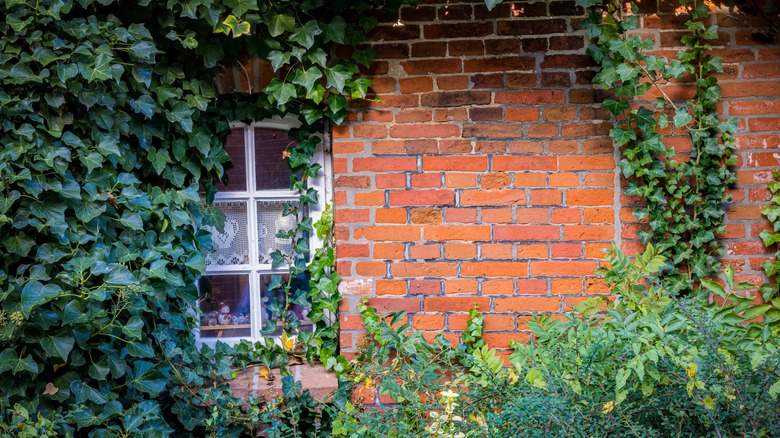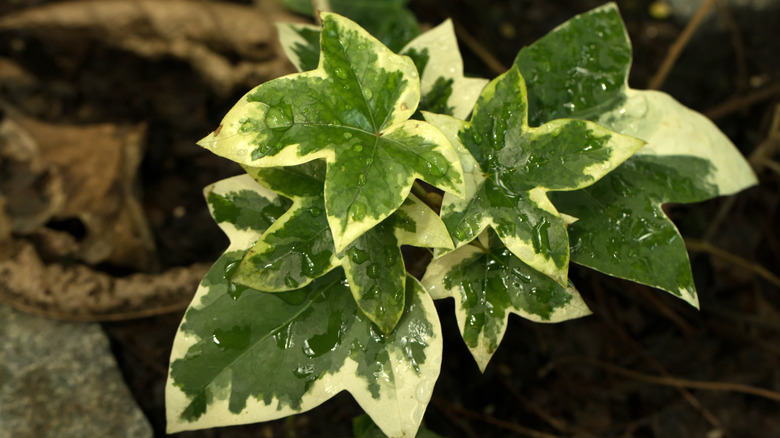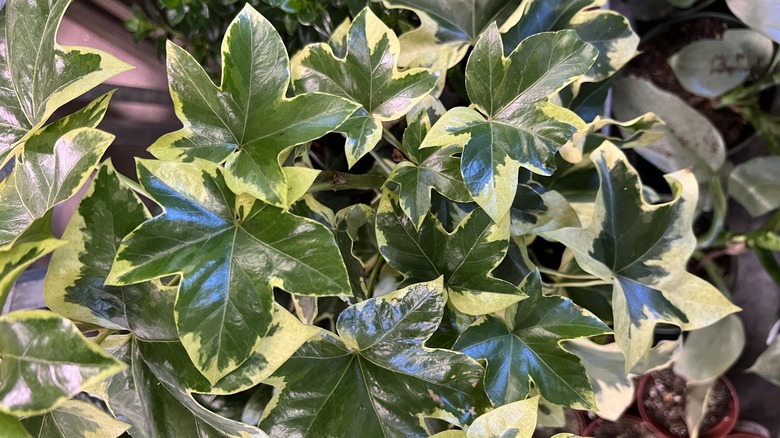The Evergreen Shrub That Resembles Ivy Without Its Invasive Qualities
We may receive a commission on purchases made from links.
While the beauty and charm of English ivy can't be denied, it also has extremely invasive tendencies and can quickly damage buildings and other structures it climbs on. Ivy is so invasive, in fact, that some cultivars are classified as noxious weeds, meaning that they can overtake native plants, be very destructive, and are difficult to control. For these reasons, many people who grow ivy up the walls of their homes end up regretting it. Luckily, you don't have to give up on your dreams of having a beautiful trellis of lush foliage just because ivy isn't a good option. Instead, you can use fatshedera (x Fatshedera lizei), a fascinating ivy hybrid that can be trained to climb and doesn't become invasive.
Fatshedera is a cross between ivy 'Hibernica' (Hedera helix) and Japanese fatsia 'Moseri' (Fatsia japonica). While a cross between plants in different genera is uncommon, it can happen. In the case of fatshedera, it resulted in a plant that can be a perfect substitute for ivy in warm zones. Unlike ivy, which thrives in zones 4 through 13, fatshedera is unfortunately only hardy in zones 7b through 10b, though it remains a popular houseplant in all regions. Luckily, there are also plenty of other good alternatives for invasive English ivy that gardeners in colder zones may be able to consider.
Provide your fatshedera with shade and regular water
Because it is a hybrid between two species in different genera, fatshedera is sterile, so you can't grow it from seed. Its lack of seeds can be seen as a benefit though, as this characteristic prevents it from spreading and becoming invasive. Fatshedera can be easily purchased at garden centers or home improvement stores like Home Depot and can also be propagated from cuttings. The leaves are quite large, as they can each be up to 8 inches wide and 10 inches long, and often have lighter edges that give this plant a unique appearance.
Finding the perfect spot for your plant shouldn't be too challenging, either, as fatshedera is surprisingly tolerant of a variety of conditions. While it grows best in at least partial shade and prefers acidic soil, fatshedera can also grow in full sun in cooler parts of its USDA zone range and can tolerate neutral to even slightly alkaline soils. Fatshedera thrives in well draining soil but can tolerate both clay and sand. This plant benefits from regular watering during warm summer months and is relatively tolerant of both salt and air pollution, making it a great option for many warm coastal cities.
Using fatshedera in the garden
While fatshedera can be trained to climb, it does not do so nearly as aggressively as ivy, which clings to buildings so tightly that it is difficult to remove and often causes damage. Fatshedera also generally needs more support than ivy does. You can either buy a trellis or DIY a garden trellis with items you already own for your fatshedera to climb. If you want the appearance of "ivy" climbing up a wall, chimney, or fireplace, you can use wire to help your plant climb.
If you prefer not to let it climb, it can also be kept pruned into a shrub. It can even be allowed to sprawl along the ground as a shade garden ground cover that will spread out about 8 to 12 feet wide. While fatshedera is evergreen in some regions, it may freeze in colder parts of its range. To ensure your yard looks great during the whole year, you may want to add other shade tolerant winter interest around your fatshedera.


